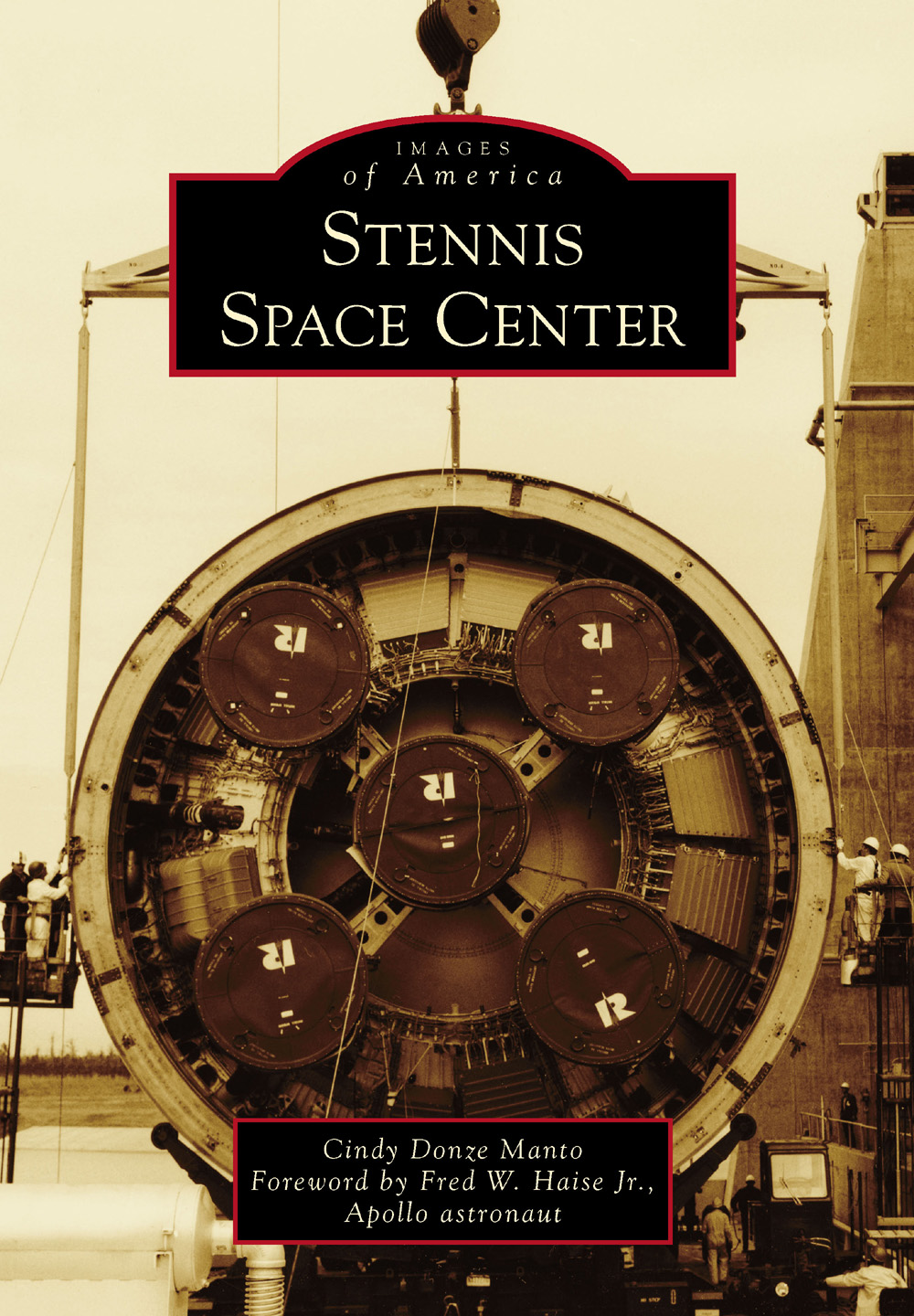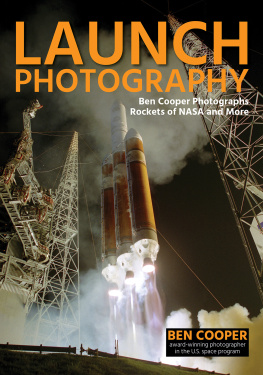
IMAGES
of America
STENNIS
SPACE CENTER

In early spring 1967, when NASA engineers at the Mississippi Test Facility needed shallow trenches dug to protect electrical cables, they employed mule power and a one-bottom plow to render the straightest furrows for those cables. In the background is the dual-position B-1/B-2 Test Stand used to static test fire the workhorse of Americas space hardware, the Saturn V S-IC rocket booster. (Authors collection.)
ON THE COVER: An Apollo/Saturn V second stage (S-II) is hoisted from its transport barge onto the A-2 Test Stand at the Mississippi Test Facility on February 21, 1967, for static firing. Manufactured by North American Rockwell Inc., the S-II was 81.5 feet in length and 33 feet in diameter; its five J-2 engines provided 1,150,000 pounds of thrust. (Authors collection.)
IMAGES
of America
STENNIS
SPACE CENTER
Cindy Donze Manto
Foreword by Fred W. Haise Jr.,
Apollo astronaut

Copyright 2018 by Cindy Donze Manto
ISBN 978-1-4671-2821-6
Ebook ISBN 9781439665688
Published by Arcadia Publishing
Charleston, South Carolina
Library of Congress Control Number: 2017959250
For all general information, please contact Arcadia Publishing:
Telephone 843-853-2070
Fax 843-853-0044
E-mail
For customer service and orders:
Toll-Free 1-888-313-2665
Visit us on the Internet at www.arcadiapublishing.com
To my husband, Fulvio Manto, an aerospace engineer who immigrated from Italy and began his career at Michoud Assembly Facility.
CONTENTS
FOREWORD
The current John C. Stennis Space Center came into being in October 1961 as the Mississippi Test Facility (MTF). At that time, I had been working as a NASA research pilot at the Lewis Research Center in Cleveland, Ohio. Whereas the MTF was created for the purpose of testing and certifying powerful rocket engines, Lewis Research Center had for years been working on reciprocating and jet engines for aircraft.
Testing the large, very loud rocket engines required a lot of acreage to assure mitigating the noise for the protection of surrounding communities. This required several small cities to be closed down with the relocation of their citizens. The primary Stennis site encompasses some 125,000 acres with a larger Buffer Zone established beyond around the compass.
The first major task was to prepare the Apollo program engines, including multiengine stages, for the huge Saturn V launch vehicle. Each Saturn V rocket included 11 engines: five F-1s on the first stage, five S-2s on the third stage, and one S-2 on the third stage. This rocket propelled nine missions to the Moon, including the Apollo 13 mission that I flew; hence, the expression If you want to go to the Moon, you will go through Mississippi.
This same service was provided in the preparation and certification of the SSME engines for the 135-flight Space Shuttle program. And that work continues today with similar rocket-engine testing supporting the soon-to-be-flown NASA Space Launch System.
After the last test of an Apollo engine at MTF, I was assigned to join Senator Stennis and other NASA officials at an auditorium setting to thank the workers who had performed those incredible tasks only to be laid off with the end of the program. I joined Senator Stennis in a following meeting with high-level representatives from several government agencies. Senator Stennis along with MTFs director, Jackson Balch Sr., described the facility as a national asset and encouraged them to utilize it for future program considerations. From that has grown the current NASA Stennis Space Center with several dozen government operations. Even a foreign operation, as Rolls Royce now conducts all their large-jet-engine testing and certification at Stennis. They like to say that NASA can make lots of noise, but we do it a lot longer.
I have a second home in Mississippi and come over at least once a month. When I am out at the grocery store or in the shopping mall, I often ask people in passing what they know about Stennis activity. I am continually amazed that all most know is that NASA tests rocket engines there. Local news telling of recent rocket firings keeps them up with that activity. They are not aware of the US Navy presence with more oceanographers at work than anywhere in the country. Or the National Oceanic and Atmospheric Administrations work with weather buoys and the tsunami buoy network off Japan to guard the West Coast of the United States. Just completely unaware of the broad scope of technology with supporting workers that is in their backyard a breadth of activity that exceeds what you would find in one place anywhere else in the United States. Hopefully, those who read this book will come to understand Stennis: truly a national asset.
Fred W. Haise, Apollo 13 Lunar Module Pilot
ACKNOWLEDGMENTS
Special thanks to Margaret Stennis Womble; Fred W. Haise Jr., Apollo astronaut; John Wilson, executive director, and Betsy Bethea, executive assistant, both of INFINITY Science Center Inc.; the Kemper County Historical Association; Heather Moore of the US Senate Historical Office; Valerie Buckingham of the NASA Office of Communications, and Paul Foerman, public information officer, both of Stennis Space Center; Charles Gray, executive director, Max Gray, and William E. Coleman, editor of The Historian of Hancock County, all of the Hancock County Historical Society.
Many thanks to Leah Rials of the McCain Library and Archives, the University of Southern Mississippi, Hattiesburg; Ryan P. Semmes, associate professor and archivist, and Amanda Carlock, library associate, both of the Mitchell Memorial Library, Mississippi State University, Starkville; Mike Jetzer, friend and authority on all matters related to space, space travel, and the creator of heroicrelics.org; Don H. Thompson, author of Stennis, Plowing a Straight Furrow; Fulvio Manto, retired director of mechanical and propulsion design, Lockheed Martin Space Systems Company; Kenneth J. Donze, for his expertise in automobiles; Allison Anderson, unabridged Architecture, Bay St. Louis; and Laurin Stennis.
Please note that this is not an official publication of NASA and that any opinions expressed or errors in content are the responsibility of the author.
INTRODUCTION
At one point during the rise in the number of NASA field installations that were being built or refurbished to meet the challenges of space travel, NASAs first administrator, James Webb, commented that The road to the Moon will be paved by bricks, and steel, and concrete here on Earth. During an era of perceived scientific superiority over other nations, facility mobilization resembled that of a mobilization for war: a Cold War of wit and intellect.
Planning for Mississippi Test Operations (MTO) originally included both the Saturn V first stage and the Nova rocket. The 363-foot-tall Nova, direct ascent (Earth to Moon) rocket, dwarfed the Saturn V three-stage launch vehicle. Testing both could not be done at existing sites at Marshall Space Flight Center in Huntsville, Alabama, because of the relatively large population surrounding Redstone Arsenal that would be subject to the dangers of the explosive fuels and noise levels.
A new facility capable of captive test firing large space vehicles in a relatively isolated location, with water access and year-round mild weather, was found on the Pearl River in the southwest corner of Mississippi. The location was approximately 38 canal miles northeast of the immense, government-owned Michoud Assembly Facility, which could accommodate the colossal dimensions of the Saturn rockets. The site for the MTO was announced on October 25, 1961. The Nova-class space vehicle concept was discarded in 1962.
Next page









